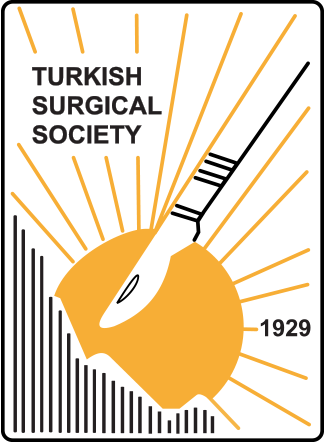Abstract
Purpose: Simultaneous repair of bilateral inguinal hernias remains controversial for some surgeons because of the increased risk of postoperative pain, wound complications, or recurrences. The current study reports a retrospective study comparing unilateral hernia repair versus simultaneous bilateral inguinal hernia repair.
Materials and Methods: Demographic features, additional diseases, type of anesthesia, operating time, hospital stay, developed complications, required analgesics, returning time to basic activity in postoperative period and recurrence rates of the patients with unilateral (Group-1; n=495, 84.3%) and simultaneous inguinal hernia repairs (Group-2; n=92, 15.7%) were evaluated retrospectively.
Results: Mean operating time was longer in Group-2 (p=0.001). There was no difference in mean hospital stay (p=0.606), complication rates (p=0.715), postoperative analgesia requirements (p=1.000) and recurrence rates (p=0.302) between the groups but returning time to basic activity was significantly shorter in Group-1 (p=0.001). The mean follow-up time was 40.1 in Group-1 and 35.1 months in Group-2 (p=0.051).
Conclusions: We believe that a tension-free technique allows bilateral inguinal hernias to be repaired in one operation, and result in similar outcomes as a unilateral tension-free repair.
Keywords:
Inguinal Hernia, Bilateral, Repair
References
1Amid PK, Shulman AG, Lichtenstein IL. Open “Tension-Free” repair of inguinal hernias; The Lichtenstein technique. Eur J Surg, 1996; 162: 447-453.
2Dakkuri RA, Ludwig DJ, Traverso LW. Should bilateral inguinal hernias be repaired during one operation? Am J Surg, 2002; 183: 554 - 557
3Kurzer M, Belsham PA, Kark AE. The Lichtenstein repair. Surg Clin North Am, 1998; 78: 1025-1046.
4Shulman AG, Amid PK, Lichtenstein IL. A survey of non-expert surgeons using the open tension-free mesh repair for primary inguinal hernias. Int Surg, 1995; 80: 35-6.
5Kingsnorth AN, Bowley DMG, Porter C. A prospective study of 1000 hernias: results of the Plymouth Hernia Service. Ann R Coll Surg Engl, 2003; 85: 18-22.
6Salcedo-Wasicek MC, Thirlby RC. Postoperative course after inguinal herniorraphy. A case controlled comparison of patients receiving worker's compensation versus patients with commercial insurance. Arch Surg, 1995; 130: 29-32.
7Sakorafas GH, Halikias L, Nissotakis C, et al. Open tension free repair of inguinal hernias; the Lichtenstein technique. BMC Surg, 2001; 1: 3.
8Rosch R, Klinge U, Si Z, et al. A role for the collagen I/III and MMP-1/-13 genes in primary inguinal hernia? BMC Med Genet, 2002; 3:2.
9Hetzer FH, Hotz T, Steinke W, et al. Gold stan-dard for inguinal hernia repair: Shouldice or Lichtenstein? Hernia, 1999; 3: 117-120.
10Kark AE, Belsham PA, Kurzer MN. Simultaneous repair of bilateral groin hernias using local anaesthesia: a review of 199 cases with a five-year follow-up. Hernia, 2005; 9: 131-133.
11Ozgun H, Kurt MN, Kurt I, et al. Comparison of local, spinal, and general anaesthesia for inguinal herniorrhaphy. Eur J Surg. 2002; 168: 455-459.



